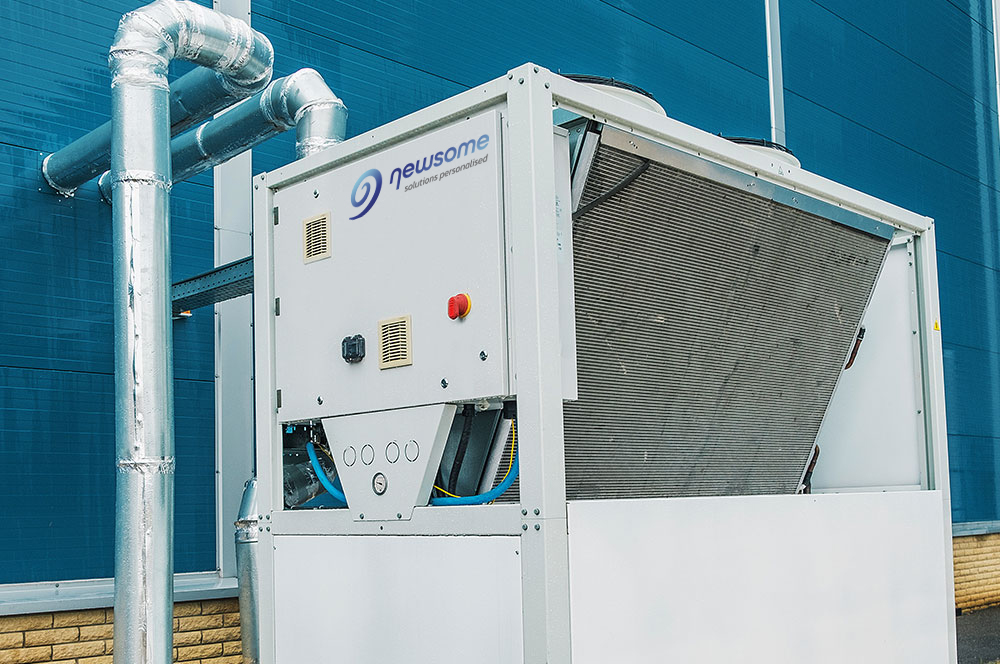Process Cooling: Unveiling the Art of Precision Temperature Control with Newsome
Process cooling – two words that carry immense importance in many critical industrial applications. These words signify the careful management of heat, ensuring that it doesn’t disrupt the delicate balance of a manufacturing or production process. At its core, process cooling refers to the systematic removal of unwanted heat from a specific operation or application often by installing state-of-the-art Process Chillers . This meticulous removal of heat is often crucial to ensure that the production process continues efficiently, reliably, and safely. It’s a practice that has found its way into numerous industries and applications due to its pivotal role in maintaining temperature stability and processing efficiencies.
Why Process Cooling?
Process cooling is not just a luxury; it’s a necessity in various industrial scenarios. The reasons for adopting process cooling are as diverse as the industries it serves.
Direct Cooling of a Product
In manufacturing settings, maintaining the optimal temperature of the product is critical.
For example:
Plastic Molding: During plastic molding processes, precise cooling is required to solidify the material in the desired shape.
Metal Machining: Metal products undergoing machining operations generate heat that needs to be dissipated to prevent material deformation or damage.
Cooling a Specific Process
Certain processes require cooling to progress effectively.
For example:
Fermentation: In the brewing industry, precise temperature control is essential during fermentation to achieve the desired flavours and characteristics in beer and lager.
Chemical Reactions: Chemical processes often involve exothermic reactions that generate heat. Cooling ensures these reactions stay within the desired temperature range.
Machine Cooling
Machinery in industrial settings generates substantial heat during operation. Cooling is vital to maintain equipment performance and longevity. For example:
Hydraulic Circuit and Gearbox Cooling: Ensures hydraulic systems and gearboxes operate optimally and prevent overheating-related failures.
Welding and Laser-Cutting Machinery: Cooling prevents overheating, ensuring accurate and consistent results.
Treatment Ovens
In processes like heat treatment, maintaining precise temperature profiles is essential for achieving the desired material properties.
The key drivers for implementing process cooling solutions are numerous:
Improving Efficiency: Cooling helps processes run at their optimal speeds, reducing lag time and enhancing overall efficiency.
Enhancing Product Quality: Precise temperature control ensures that products meet the desired quality standards.
Preventing Product Spoilage: In industries like food processing, overheating can lead to spoilage and wastage.
Reducing Maintenance Costs: Cooling helps extend the lifespan of machinery, reducing the need for costly repairs and replacements.
Ensuring Safety: Keeping temperatures within safe limits is crucial for preventing accidents and ensuring worker safety.
Newsome: Your Trusted Partner in Process Cooling
In the world of process cooling, where precision and reliability are paramount, Newsome emerges as the unrivalled choice. Here’s why Newsome is the go-to company for all your process cooling needs:
- Expertise and Experience
Newsome brings decades of experience in industrial temperature and humidity control solutions. Their team of experts understands the nuances of process cooling in various industries, ensuring that you receive the most reliable and efficient solutions tailored to your specific requirements.
- Cutting-Edge Technology
In a rapidly evolving technological landscape, Newsome stays ahead of the curve. Their process cooling equipment including chillers & packaged chillers incorporates the latest advancements, guaranteeing optimal performance and energy efficiency.
- Custom Solutions
No two industrial processes are identical, and Newsome acknowledges this fact. They offer a range of customisation options to ensure that your process cooling solution aligns perfectly with your unique needs.
- Reliability and Durability
When you choose Newsome, you choose reliability. Their equipment is built to withstand the rigors of industrial use, offering longevity and consistent performance.
- Environmental Responsibility
Newsome understands the importance of sustainability. Their process cooling solutions are designed with eco-friendly practices in mind, helping you reduce your carbon footprint and meet environmental goals.
- Comprehensive Support
Newsome doesn’t just deliver chiller equipment; they provide comprehensive support throughout the lifecycle of your process cooling solution. From installation and chiller maintenance to troubleshooting and upgrades, Newsome is with you every step of the way.
- Proven Track Record
Newsome’s track record of successful installations and satisfied customers speaks volumes about their commitment to excellence. Their portfolio includes a diverse range of industries, from manufacturing and food processing to pharmaceuticals and more.
Elevate Your Process with Newsome
Process cooling is more than just managing heat; it’s about ensuring the smooth and efficient operation of your industrial processes. Newsome understands this fundamental need and offers a comprehensive range of process cooling solutions and equipment to help you achieve precision, reliability, and efficiency in your operations.
With Newsome as your trusted partner, you can take your processes to new heights, secure in the knowledge that you have the industry’s best by your side. Don’t compromise on the critical aspect of process cooling; choose Newsome and experience the difference firsthand.
Elevate your process with Newsome – where precision meets excellence.

